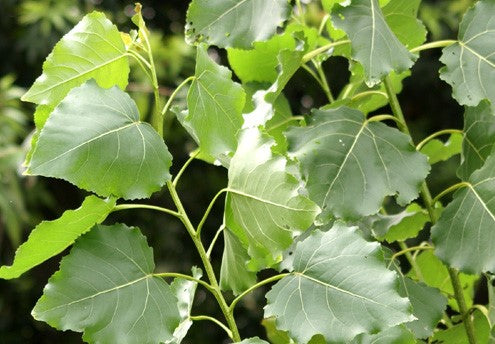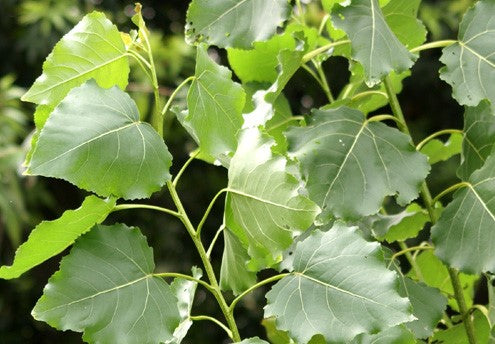1
/
of
1
POPULUS DELTOIDES / EASTERN COTTONWOOD
- Regular price
-
$27.99 CAD - Regular price
-
- Sale price
-
$27.99 CAD
Shipping calculated at checkout.
Couldn't load pickup availability
Delivery Fees
Delivery Policy
Enjoy FREE delivery on all orders over $149!
For orders between $80 and $149, a $18.99 delivery fee will apply.
Orders under $80 will be prompted to add more items to your cart.
- Appearance: Eastern cottonwood is a sizable tree that can reach heights of 50 to 100 feet (15 to 30 meters) or more. It has a straight trunk with a broad, rounded crown. The leaves are triangular or deltoid in shape, which is how the tree gets its species name, and they are green in the summer, turning yellow in the fall.
- Habitat: This tree species is commonly found in moist to wet environments, particularly along riverbanks, streams, and floodplains. It is well-suited to areas with periodic flooding and is often one of the first trees to colonize disturbed, alluvial soils.
- Seed Dispersal: Eastern cottonwood is dioecious, meaning individual trees are either male or female. Female trees produce fluffy cotton-like seeds that are carried by the wind, giving the tree its common name. These cottony seeds can travel long distances, helping the tree spread its seeds over a wide area.
- Growth Rate: Eastern cottonwood is known for its rapid growth. Under favorable conditions, it can grow several feet in a single year. This fast growth makes it a valuable tree for land reclamation, windbreaks, and erosion control.
- Wildlife Habitat: Cottonwood trees, including eastern cottonwood, provide important habitat and food for various wildlife species. The leaves are a food source for caterpillars and other insects, which, in turn, serve as food for birds. The tree's cavities and branches can also offer nesting sites for birds and shelter for other wildlife.
- SPREAD16-18 M
- HEIGHT 20-50 M
- PLANT ZONE 2
- NATIVE TO ONTARIO
Care Instructions
Different plants have different watering needs. Check the soil moisture by inserting your finger about an inch into the soil. If it feels dry, water the plant until the water drains from the bottom of the pot. Avoid overwatering, as it can lead to root rot.

POPULUS DELTOIDES / EASTERN COTTONWOOD
- Regular price
-
$27.99 CAD - Regular price
-
- Sale price
-
$27.99 CAD
SALE
All Echinacea & Monarda, Buy 4 get 1 Free! No code required


